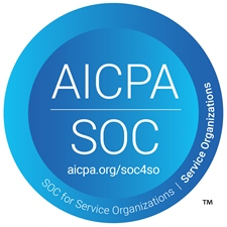Fully integrated solutions are our specialty.
EFSP
Electronic Filing Service Provider
The EFSP or Filer Interface is, in the ECF 4 language, a Major Design Element (MDE), which is a web-based interface filers use to fill in data and upload documents to be submitted to the court or agency. The interface helps guide users on what they can and cannot send and incorporates information needed so that the data can be updated to the appropriate CMS automatically.
Our experience has allowed us to extend our Filer Interface to collect complex data associated with documents. For example, many documents require additional data be collected for updating the CMS. Following are events or documents that often require additional data to update the CMS:
- Alias For Order of Sale
- Amended Complaint
- Notice of Appearance
- Pluries Praecipe For Order Of Sale
- Return of Service
- Hearing Info – Date/Time
- Petition – Birth Date, Adult/Minor, Publication
- Name Change/Birth Certificate Correction – New Name
- Adoption Application
The Filer Interface also interacts with the payment gateway to collect filing fees designated by calls to the CMS.
The Filer Interface keeps filers up-to-date on what is happening on their submissions. For each submission, the filer receives several status updates. Each status shows the condition of the filing, which includes when the court receives the submission and when it was accepted or rejected by the clerk for docketing. Within the response to each submission the clerk can add comments. The comments can be instructional or they can be statements of why rejections may have taken place. If the firewall detects that a submission has an embedded virus it is automatically rejected.
The Filer Interface is also where the filer receives notifications of documents that were submitted by other participants on the case including items from the clerk or judge in addition to email messages. Through this interface the filer can download the documents electronically that are associated with the notification.
With the Filer Interface, each user has a listing of the cases they have electronically participated in. When a new filer joins an existing case, the filer must provide certain information so the system can verify that the case exists and that the participants they represent also exist on the case.
EFM
Electronic Filing Manager
The EFM or Clerk/Court Review Interface, is a separate login from the Filer Interface. The Clerk Review process is a combination of workflow and queues to process submissions. The review process gives the clerk access to the data and documents awaiting approval, as well as reports from history stored in the efiling system.
Within this interface, a clerk reviews the documents and information the filer has submitted. eFlex Clerk Review stores the documents and data in a temporary environment prior to the documents and information being recorded.
If the information in the submission is invalid the clerk can reject the submission and include an explanation as to why. If the clerk accepts the submission, the process shifts to the collection of court fees.
eFlex can also be configured to automatically process submission based on configurable criteria, eliminating manual review of submissions. Many customers experience the automatic acceptance of more than 50% of the documents submitted.
The Clerk/Court Review Interface is where judges, judicial support staff, and other internal personnel login to interact with the efiling system. This interface supports workflow for the judges and judicial support staff.
Workflow Queues
eFlex includes the following types of queues to support certain workflow conditions:
- Pre-Queue – A judge needs to sign a fee waiver or warrant prior to giving the clerk the documents for review and recording.
- Clerk Review Queue – The process where submissions are assigned to various clerks for reviewing, approving/rejecting, and recording.
- Standard Queues – After a submission has been reviewed and recorded by the clerk there are times when secondary work has to be performed on a case such as issuing summons using certified mail. Although some of these documents can be automatically generated in the efiling system others must be produced in paper.
- Judicial Queue – After a motion is recorded or the submission includes a proposed order, the judicial support staff or the judge needs to act on the documents and create a new submission.
In addition, there are critical features utilized by some of the queues called ‘gatekeepers’ and mass signatures. A gatekeeper is a function that allow judges to identify judicial support staff that will review and perfect proposed orders before the judge reviews the documents. The mass signature feature allows the gatekeeper to identify for the judge items that are non-substantive and just need a signature and don’t need the judge to review them.



